Carrie Knause Early Childhood Learning Center serves 215 students in grades Prekindergarten-2.
The student:teacher ratio of 17:1 is equal to the Michigan state level of 17:1.
Minority enrollment is 22% of the student body (majority Hispanic), which is lower than the Michigan state average of 37% (majority Black).
Quick Stats (2025)
- Grades: Prekindergarten-2
- Enrollment: 215 students
- Student:Teacher Ratio: 17:1
- Minority Enrollment: 22%
- Source: National Center for Education Statistics (NCES), MI Dept. of Education
School Overview
Carrie Knause Early Childhood Learning Center's student population of 215 students has declined by 6% over five school years.
The teacher population of 13 teachers has stayed relatively flat over five school years.
Grades Offered
Grades Prekindergarten-2
(offers virtual instruction)
(offers virtual instruction)
Total Students
215 students
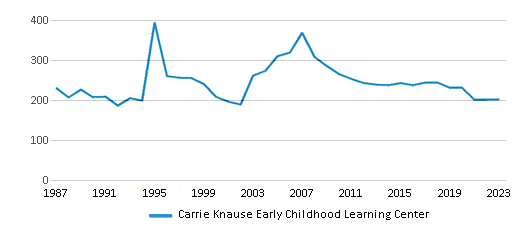
Gender %
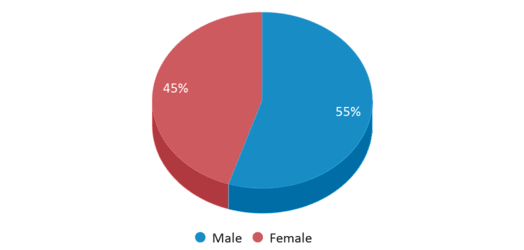
Total Classroom Teachers
13 teachers
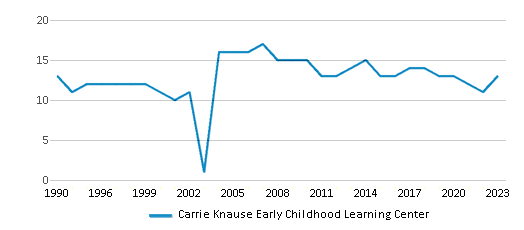
Students by Grade
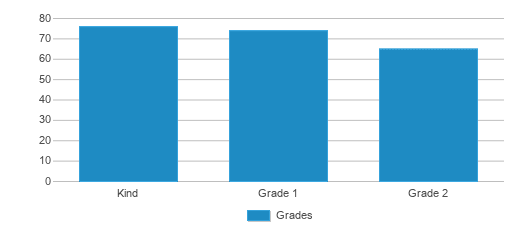
School Rankings
The diversity score of Carrie Knause Early Childhood Learning Center is 0.37, which is less than the diversity score at state average of 0.56. The school's diversity has stayed relatively flat over five school years.
Student : Teacher Ratio
17:1
17:1
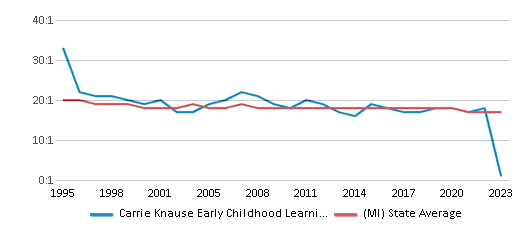
American Indian
n/a
1%
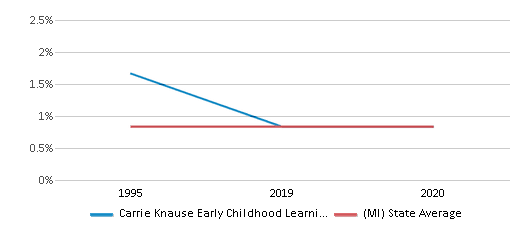
Asian
n/a
4%
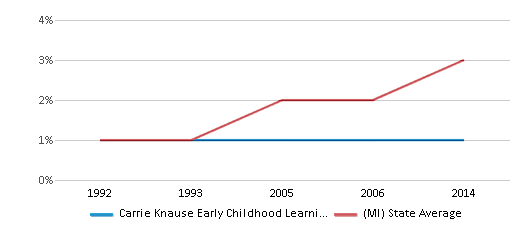
Hispanic
15%
9%
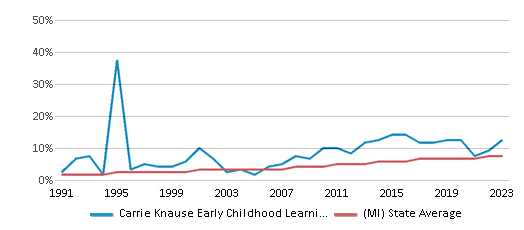
Black
1%
18%
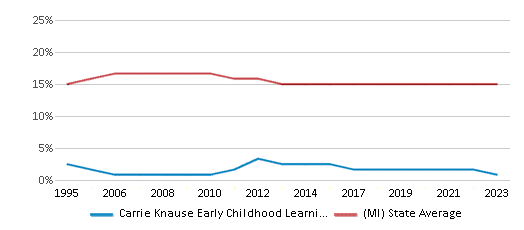
White
78%
63%
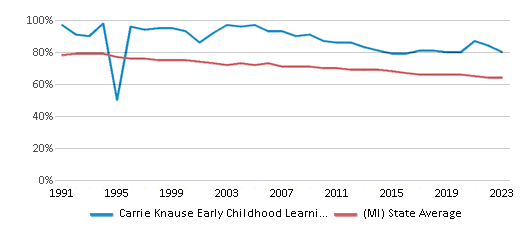
Hawaiian
1%
n/a
Two or more races
5%
5%
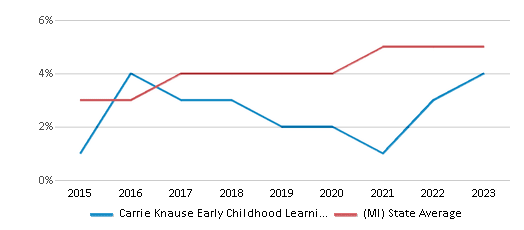
All Ethnic Groups


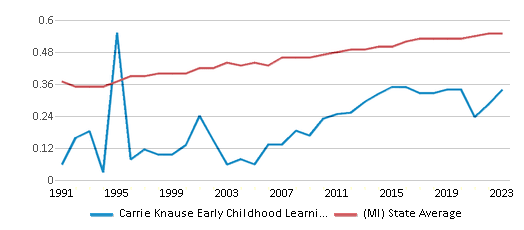
Participates in the National School Lunch Program (NSLP)
Yes
Eligible for Free Lunch
74%
50%
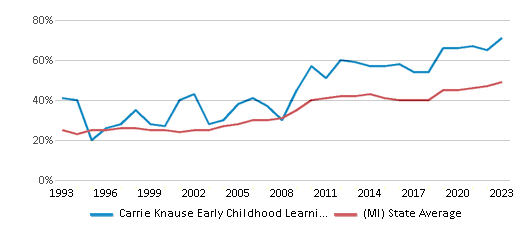
Eligible for Reduced Lunch
7%
4%
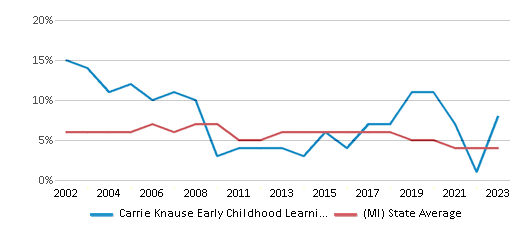
School Statewide Testing
School District Name
Source: National Center for Education Statistics (NCES), MI Dept. of Education
Profile last updated: 02/09/2025
Frequently Asked Questions
How many students attend Carrie Knause Early Childhood Learning Center?
215 students attend Carrie Knause Early Childhood Learning Center.
What is the racial composition of the student body?
78% of Carrie Knause Early Childhood Learning Center students are White, 15% of students are Hispanic, 5% of students are Two or more races, 1% of students are Black, and 1% of students are Hawaiian.
What is the student:teacher ratio of Carrie Knause Early Childhood Learning Center?
Carrie Knause Early Childhood Learning Center has a student ration of 17:1, which is equal to the Michigan state average of 17:1.
What grades does Carrie Knause Early Childhood Learning Center offer ?
Carrie Knause Early Childhood Learning Center offers enrollment in grades Prekindergarten-2 (offers virtual instruction).
What school district is Carrie Knause Early Childhood Learning Center part of?
Carrie Knause Early Childhood Learning Center is part of St. Louis School District.
School Reviews
1 5/6/2021
Horrible School. The Principal is uncaring and many staff as well. Your child will be treated like they are a burden here and made to feel like they will never amount to anything. Since my child has been attending this school, their confidence has plummeted. Never enrolling in the St. Louis school system again.
Review Carrie Knause Early Childhood Learning Center. Reviews should be a few sentences in length. Please include any comments on:
- Quality of academic programs, teachers, and facilities
- Availability of music, art, sports and other extracurricular activities
Recent Articles

What Is A Charter School?
Explore the world of charter schools in this comprehensive guide. Learn about their history, how they operate, and the pros and cons of this educational innovation. Discover key facts about charter schools, including admission policies, demographics, and funding, as well as what to look for when considering a charter school for your child.

10 Reasons Why High School Sports Benefit Students
Discover the 10 compelling reasons why high school sports are beneficial for students. This comprehensive article explores how athletics enhance academic performance, foster personal growth, and develop crucial life skills. From improved fitness and time management to leadership development and community representation, learn why participating in high school sports can be a game-changer for students' overall success and well-being.

February 05, 2025
Understanding the U.S. Department of Education: Structure, Impact, and EvolutionWe explore how the Department of Education shapes American education, from its cabinet-level leadership to its impact on millions of students, written for general audiences seeking clarity on this vital institution.





